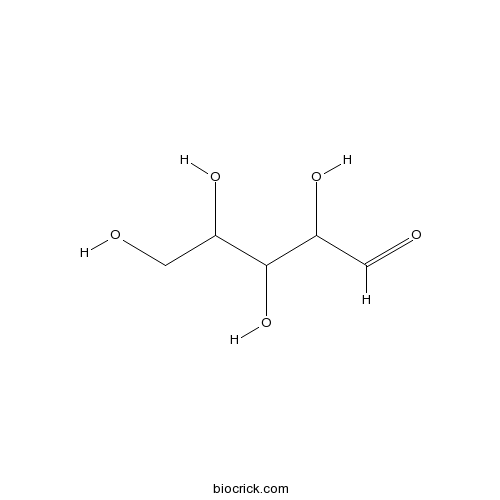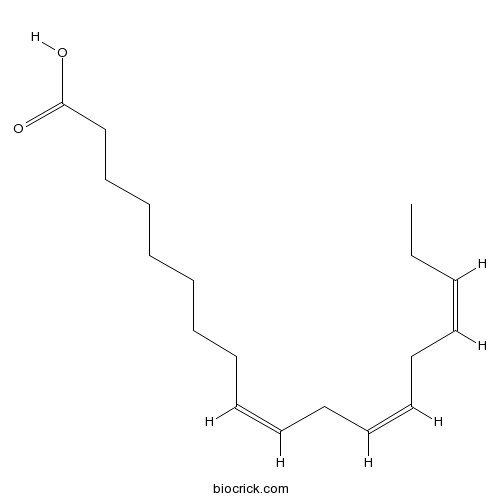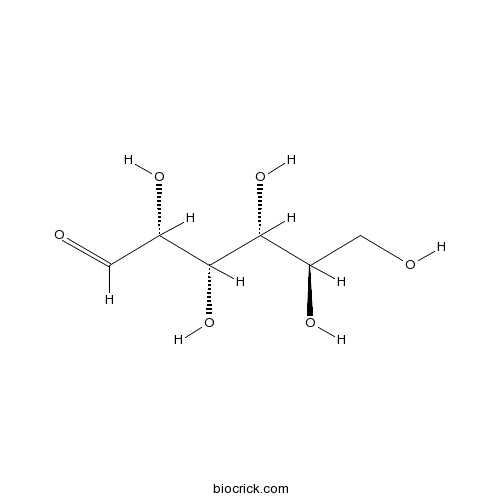Cucurbita moschata
Cucurbita moschata
1. The products in our compound library are selected from thousands of unique natural products; 2. It has the characteristics of diverse structure, diverse sources and wide coverage of activities; 3. Provide information on the activity of products from major journals, patents and research reports around the world, providing theoretical direction and research basis for further research and screening; 4. Free combination according to the type, source, target and disease of natural product; 5. The compound powder is placed in a covered tube and then discharged into a 10 x 10 cryostat; 6. Transport in ice pack or dry ice pack. Please store it at -20 °C as soon as possible after receiving the product, and use it as soon as possible after opening.
Natural products/compounds from Cucurbita moschata
- Cat.No. Product Name CAS Number COA
-
BCN8816
7,22,25-Stigmastatrienol14485-48-4
Instructions

-
BCN8541
DL-Arabinose147-81-9
Instructions

-
BCN8319
alpha-Linolenic acid463-40-1
Instructions

-
BCN1259
D-(+)-Glucose50-99-7
Instructions

-
BCN3820
Stearic Acid57-11-4
Instructions

-
BCN3821
Linoleic acid60-33-3
Instructions

-
BCN8471
Inositol87-89-8
Instructions

Transcriptome analysis reveals the effects of grafting on sugar and α-linolenic acid metabolisms in fruits of cucumber with two different rootstocks.[Pubmed: 30036858]
Flavor quality in cucumber is affected by different rootstocks, but the molecular mechanism is largely unclean. To clarify the differences of sugar and aromatic compounds, cucumber (cucumis sativus) fruits from plants of self-grafted (SG) or grafted onto figleaf gourd (Cucurbita ficifolia; G1) or 'Weisheng No.1' rootstock (Cucurbita moschata ⅹCucurbita moschata hybrids; G2) were performed the transcriptome analysis. We obtained 1013 and 920 differentially expressed genes (DEGs) from G1 and G2 compared to SG respectively, in which 453 genes were co-expressed. Functional annotations showed many DEGs were involved in glycolysis/gluconeogenesis metabolism, fructose metabolism and α-Linolenic acid metabolisms, 20 DEGs were selected from the 3 pathways to validate sequencing accuracy by quantitative real-time PCR. The gene relative expression levels were concurrent with RNA-seq results and sugar and aromatic compounds content phenotypes. Moreover, some vital transcript factors and transport proteins were analyzed. These findings indicate that different rootstocks could induce significantly changes in the physiological profiling and transcripts of sugar- and aromatic flavor-related genes. This study provides a novel insight into the molecular mechanisms of fruit quality regulated by candidate genes.
Dehydrodiconiferyl Alcohol Inhibits Osteoclast Differentiation and Ovariectomy-Induced Bone Loss through Acting as an Estrogen Receptor Agonist.[Pubmed: 29869503]
Estrogen deficiency after menopause increases bone loss by activating RANKL-induced osteoclast differentiation. Dehydrodiconiferyl alcohol (DHCA), a lignan originally isolated from Cucurbita moschata, has been thought to be a phytoestrogen based on its structure. In this study, we tested whether DHCA could affect RANKL-induced osteoclastogenesis in vitro and ovariectomy-induced bone loss in vivo. In RAW264.7 cells, DHCA inhibited RANKL-induced differentiation of osteoclasts. Consistently, expression of the six osteoclastogenic genes induced by RANKL was down-regulated. DHCA was also shown to suppress the NF-κB and p38 MAPK signaling pathways by activating AMPK. Data from transient transfection assays suggested that DHCA might activate the estrogen receptor signaling pathway. Effects of DHCA on RANKL-induced osteoclastogenesis were reduced when cells were treated with specific siRNA to ERα, but not to ERβ. Interestingly, DHCA was predicted from molecular docking simulation to bind to both ERα and ERβ. Indeed, data from an estrogen receptor competition assay revealed that DHCA acted as an agonist on both estrogen receptors. In the ovariectomized (Ovx) mouse model, DHCA prevented Ovx-induced bone loss by inhibiting osteoclastogenesis. Taken together, our results suggest that DHCA may be developed as an efficient therapeutic for osteoporosis by regulating osteoclastogenesis through its estrogenic effects.
Ovipositional Preferences of Two Squash Bug Species, Anasa tristis and Anasa armigera (Heteroptera: Coreidae), for Different Cultivars and Species of Cucurbitaceae.[Pubmed: 29718492]
The ovipositional preferences of two squash bug species, Anasa tristis (DeGeer) (Heteroptera: Coreidae) and Anasa armigera Say (Heteroptera: Coreidae), were evaluated in paired choice tests of different species and cultivars of plants in the family Cucurbitaceae. Females of A. tristis preferred to oviposit on the cultivar from which they were reared over three other cultivars of the same species. However, females did not show any ovipositional preference for different cultivars when they had no previous exposure to either cultivar. Females of A. tristis were equally likely to oviposit on Cucurbita pepo, Cucurbita maxima, and Cucurbita moschata but were significantly more likely to oviposit on C. pepo than on cucumber and watermelon. Females of A. armigera were equally likely to oviposit on C. pepo or cucumber, regardless of the species they were reared on. When A. armigera was reared on C. pepo, females were more likely to oviposit on C. maxima than on cucumber and less likely to oviposit on C. moschata than on cucumber.


